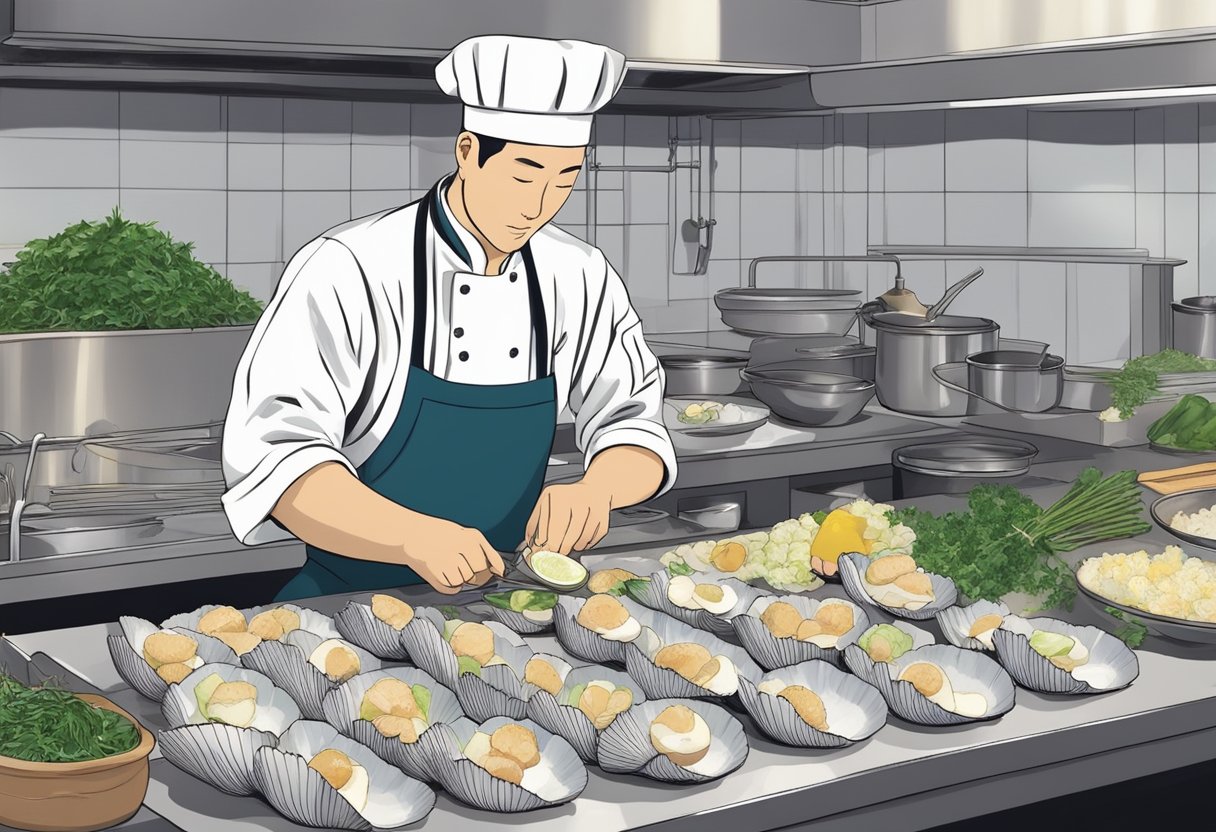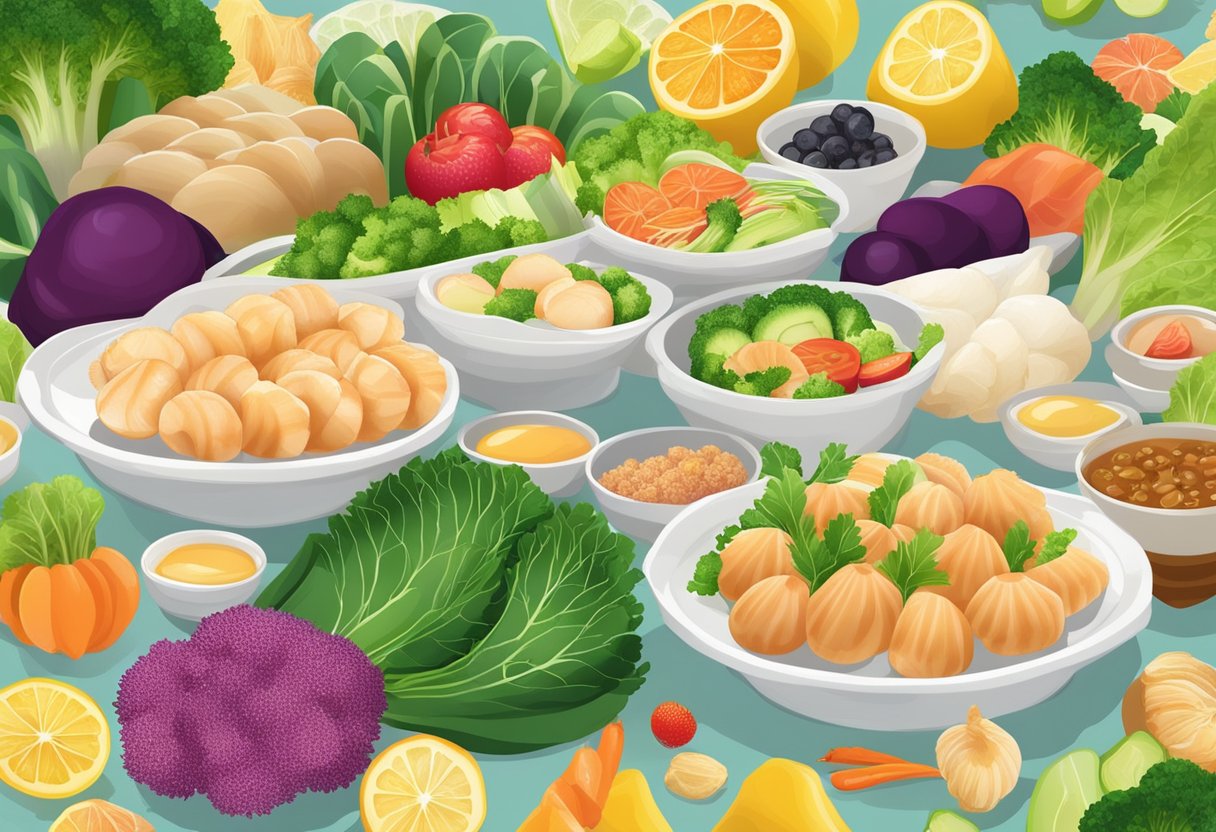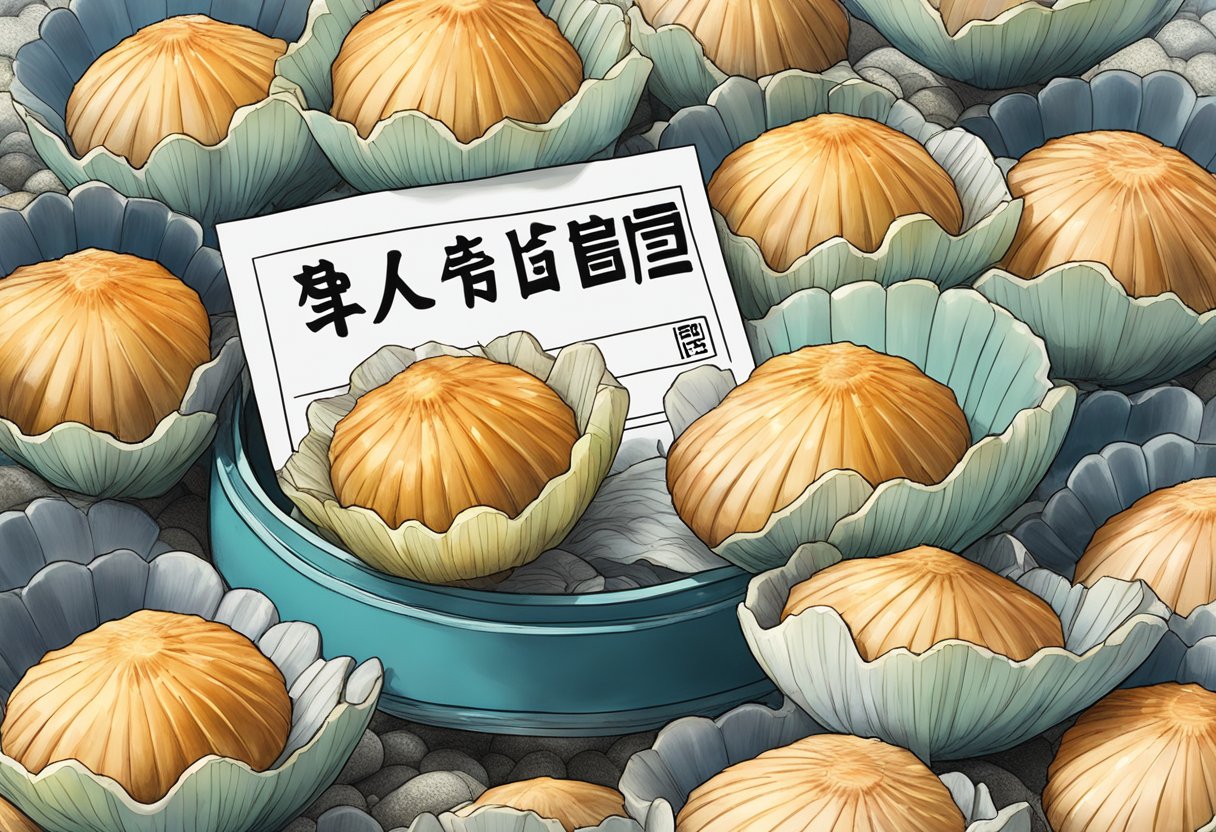Japanese scallops are a popular type of seafood that have been enjoyed in Japan for centuries. These molluscs are known for their sweet and delicate flavour, which makes them a favourite ingredient in Japanese cooking. Whether you are a seafood lover or just looking to try something new, Japanese scallops are definitely worth a try.
In Japanese cuisine, scallops are often used in a variety of dishes, including sushi, sashimi, and stir-fries. One popular way to prepare them is by pan-searing them with butter and soy sauce, which creates a deliciously savoury and slightly sweet flavour. Japanese chefs also use scallops in salads, soups, and stews, adding a unique texture and flavour to each dish.
If you're looking to add more seafood to your diet, Japanese scallops are a great choice. They are low in calories and fat, yet high in protein and essential nutrients like vitamin B12 and omega-3 fatty acids. However, it's important to note that some people may be allergic to shellfish, so be sure to check with your doctor before trying them.
Key Takeaways
- Japanese scallops are a popular type of seafood used in Japanese cooking.
- They can be prepared in a variety of ways, including pan-searing with butter and soy sauce.
- Japanese scallops are low in calories and fat, yet high in protein and essential nutrients.
Culinary Uses of Japanese Scallops

Japanese scallops are a versatile ingredient that can be used in a variety of dishes. Whether you're baking, searing, or cooking scallops, there are many ways to incorporate this delicious seafood into your meals.
Cooking Techniques
When cooking Japanese scallops, there are several techniques you can use to achieve the desired texture and flavour. Searing is a popular cooking method that produces a crispy exterior and a tender interior. Baking is another option that can result in a moist and flavourful dish.
Japanese Scallop Dishes
There are many Japanese dishes that feature scallops as a main ingredient. Sashimi is a popular way to enjoy scallops in their raw form. Hotate, or scallop sushi, is another traditional Japanese dish that is easy to make at home. You can also add scallops to stir-fries, soups, and stews for a delicious and nutritious meal.
Flavour Enhancements
To enhance the flavour of Japanese scallops, you can use a variety of ingredients and seasonings. Butter, soy sauce, lemon, cream, parsley, and chives are all great options for adding flavour to scallops. Yuzu-flavoured tobiko and spicy mayo are also popular condiments that can be used to complement the delicate flavour of scallops.
If you're looking to substitute Japanese scallops for another ingredient, keep in mind that they have a slightly sweet and delicate flavour. Salt, pepper, and sugar can all be used to enhance the natural flavour of scallops. Freshly ground black pepper is also a great option for adding a subtle kick to your dish.
When cooking Japanese scallops, be sure to pay close attention to the pan sauce. This can be used to add additional flavour and moisture to your dish. With a little creativity and experimentation, you can create delicious and unique dishes using Japanese scallops.
Nutritional Benefits and Considerations

Health Benefits
Japanese scallops are a great source of protein, which is essential for building and repairing tissues in your body. They are also low in fat, making them a great option for those who are watching their weight.
Scallops are rich in vitamins and minerals, including zinc, magnesium, and vitamin B12. Zinc is important for maintaining a healthy immune system and wound healing. Magnesium is essential for maintaining healthy bones and muscles, while vitamin B12 is important for the production of red blood cells.
Japanese scallops are also packed with taurine, an amino acid that is important for maintaining healthy eyes and heart. Taurine is also found in other seafood, such as abalone and fish roe.
Dietary Information
When it comes to dietary information, Japanese scallops are relatively low in calories. A 100-gram serving of steamed or boiled scallops contains around 137 calories. They are also low in carbohydrates, with only 6.33 grams per serving.
Japanese scallops are a good source of iron, which is important for maintaining healthy blood cells. They also contain calcium, which is essential for maintaining healthy bones and teeth.
If you are allergic to shellfish, you should avoid eating Japanese scallops. Additionally, frozen scallops may contain added sodium, so it is important to check the label before purchasing.
Overall, Japanese scallops are a nutritious and delicious addition to any seafood dish. They are low in fat, high in protein, and packed with vitamins and minerals. If you are looking to add more seafood to your diet, Japanese scallops are definitely worth a try!
Frequently Asked Questions

Where can I purchase Japanese scallops?
You can purchase Japanese scallops from your local seafood market or online. Hokkaido scallops, which are a popular type of Japanese scallop, can be found in many specialty seafood stores and online retailers.
What's a popular Japanese scallop sushi recipe?
One popular Japanese scallop sushi recipe is the Hokkaido scallop nigiri. To make this sushi, slice the Hokkaido scallop thinly and place it on top of a small ball of sushi rice. You can also add wasabi or soy sauce to taste.
How can I cook Japanese scallops at home?
Japanese scallops can be cooked in a variety of ways, including searing, grilling, or baking. One popular way to cook them is to sear them in a pan with butter and garlic. Another option is to grill them with a marinade made of soy sauce, ginger, and sesame oil.
What's the going rate for Japanese scallops?
The price of Japanese scallops can vary depending on the type and location. Hokkaido scallops, for example, are known for their high quality and can be more expensive than other types of Japanese scallops. The best way to find out the going rate is to check with your local seafood market or online retailers.
What is the scientific name for Japanese scallops?
The scientific name for Japanese scallops is Mizuhopecten yessoensis. They are also commonly known as Hokkaido scallops.
What makes Hokkaido scallops stand out?
Hokkaido scallops are known for their sweet, delicate flavor and tender texture. They are also prized for their large size and high quality. Hokkaido scallops are sustainably farmed and harvested in the cold, clear waters off the coast of Japan, which contributes to their unique taste and texture.

